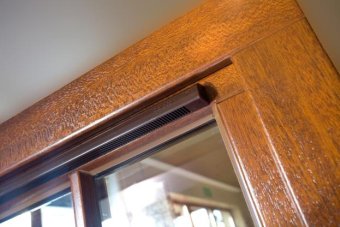Adequate ventilation is the key when it comes to ensuring a pleasant atmosphere in your home. Even the best ventilation system is worthless without windows that work with it.
Our windows are equipped with two seals. This ensures proper sealing and sound absorption. Seals are made of a material resistant to ageing, weathering and contact with acrylic paints.
The seal is not glued on. It can be removed and replaced at any time if the need arises.
Microgapping
Microgapping also known as microventilation is a means of unsealing the window. Microventilation is ensured through the use of special hardware elements installed on the sash and frame. It is enough to simply turn the handle by 45° upwards from its horizontal position and pull the upper edge of the sash towards you. In a window with microventilation a small gap will be created between the frame and sash through which air will begin to flow from the outside.
Although microventilation is not a replacement for proper ventilation (opening windows completely), it is worth remembering that using it makes it possible to avoid moisture and water vapour accumulation on window panes and walls of interiors, especially in buildings where the ventilation system is not proper. However, when using microventilation, remember that an unsealed window is not securely locked and may be a tempting target for burglars. It is better to close the windows before you leave home – especially when they are easily accessible from the outside, for example, situated on the ground floor.
Air inlets
In addition to the microgapping, which constitute standard elements of our windows, air inlets can be purchased for an additional charge.
Humidity sensitive Aereco air inlet
We recommend the humidity sensitive Aereco air inlet, which automatically adjusts the air flow to the humidity level of the room. If air humidity falls in the room, the air inlet closes.
The air inlet will open when the water vapour content rises in the air, i.e. the level of humidity increases. Air inlets are installed in the top part of the window. Even with tightly closed windows, air inlets let in fresh air continuously, in an amount that is compliant with current regulations.

Fot. Humidity sensitive air inlet
However, air inlets, aside from their many benefits, also have some drawbacks. Unfortunately, it is not possible to forget about the not overly pleasing visual effect both inside the room and from the outside. Because of the limited colour palette, it is impossible to choose an inlet to match the woodwork.



